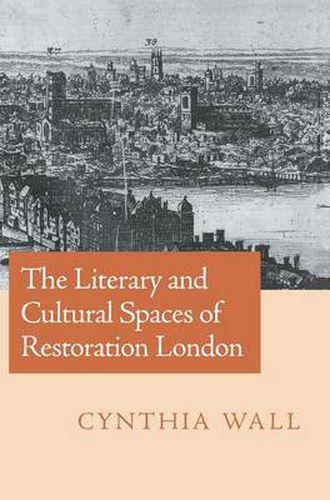Readings Newsletter
Become a Readings Member to make your shopping experience even easier.
Sign in or sign up for free!
You’re not far away from qualifying for FREE standard shipping within Australia
You’ve qualified for FREE standard shipping within Australia
The cart is loading…






In September 1666 the Great Fire destroyed four-fifths of the ancient City of London within three days. All that had been familiar, settled, known, was suddenly and entirely swept away. Londoners faced an emptiness that was not only physical but also historical, social, financial, and conceptual. The Literary and Cultural Spaces of Restoration London is the first study to situate the literature of Restoration and early Augustan England within the historical and cultural contexts of the rebuilding of London after the Great Fire. Cynthia Wall relates the marked topographical specificity of plays, poems, and novels to a wider cultural network of responses to changing perceptions of urban space, and she shows how the literatures of the period - along with the surveying, mapping, rebuilding, and official redescribing of the city - attempt to reinvest the city with comprehensible meaning and create new spaces for new genres.
$9.00 standard shipping within Australia
FREE standard shipping within Australia for orders over $100.00
Express & International shipping calculated at checkout
In September 1666 the Great Fire destroyed four-fifths of the ancient City of London within three days. All that had been familiar, settled, known, was suddenly and entirely swept away. Londoners faced an emptiness that was not only physical but also historical, social, financial, and conceptual. The Literary and Cultural Spaces of Restoration London is the first study to situate the literature of Restoration and early Augustan England within the historical and cultural contexts of the rebuilding of London after the Great Fire. Cynthia Wall relates the marked topographical specificity of plays, poems, and novels to a wider cultural network of responses to changing perceptions of urban space, and she shows how the literatures of the period - along with the surveying, mapping, rebuilding, and official redescribing of the city - attempt to reinvest the city with comprehensible meaning and create new spaces for new genres.